Posted on May 8th, 2011 by ASEE
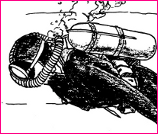 Scuba diving is an excellent hobby for underwater naturalists. In this lesson, students in grades 6-8 learn about the concepts of buoyancy and how organisms float, sink, or hover in water as they construct a neutrally buoyant “scuba diver.”
Scuba diving is an excellent hobby for underwater naturalists. In this lesson, students in grades 6-8 learn about the concepts of buoyancy and how organisms float, sink, or hover in water as they construct a neutrally buoyant “scuba diver.”
Read More
Filed under: Grades 6-8, Lesson Plans | Comments Off on Lesson: Construct a Buoyant Scuba Diver
Tags: Grades 6-8, Lesson Plan, Marine engineering, Marine Science, Ocean, Ocean science
Posted on March 13th, 2011 by Jaimie Schock
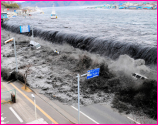 Water is surprisingly heavy, and, when in motion, it can kill. The tsunami that hit Northern Japan on Friday is an eye-opening example of the power water can have—and the devastation it can bring. “It’s basically like a hundred tanks coming across you,” oceanography professor Philip Froelich says.
Water is surprisingly heavy, and, when in motion, it can kill. The tsunami that hit Northern Japan on Friday is an eye-opening example of the power water can have—and the devastation it can bring. “It’s basically like a hundred tanks coming across you,” oceanography professor Philip Froelich says.
Read More
Filed under: Special Features | Comments Off on Feature: Tsunami Waves’ Destructive Power
Tags: Japan, Ocean, Ocean science, Physics, Water
Posted on December 2nd, 2010 by ASEE
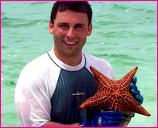 Teachers of grades 6 through 8 from Northrup Grumman communities have a chance to join an expedition either to the Bahamas, to examine coastal ecology, or to the edge of the Arctic, to study climate change.
Teachers of grades 6 through 8 from Northrup Grumman communities have a chance to join an expedition either to the Bahamas, to examine coastal ecology, or to the edge of the Arctic, to study climate change.
Read More
Filed under: For Teachers, K-12 Outreach Programs, Web Resources | Comments Off on Travel Fellowships for Middle School Teachers
Tags: Climate Change, Corporations, Environmental science, Grades 6-8, Ocean, Ocean science, Outreach, Programs for Teachers, Scholarships and Fellowships
Posted on July 19th, 2010 by ASEE
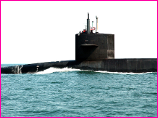 Students in grades 5-8 learn the basic principle of buoyancy and how submarines use it to dive and ascend in water through creating their own submarine out of a soda bottle, pennies, and other household items. Activity courtesy of the National Museum of the U.S. Navy.
Students in grades 5-8 learn the basic principle of buoyancy and how submarines use it to dive and ascend in water through creating their own submarine out of a soda bottle, pennies, and other household items. Activity courtesy of the National Museum of the U.S. Navy.
Read More
Filed under: Class Activities, Grades 6-8, Grades 9-12, Grades K-5, K-12 Outreach Programs, Lesson Plans | 3 Comments »
Tags: buoyancy, Class Activities, Engineering Design Process, Nautical Engineering, Ocean, Ocean science, submarine, U.S. Navy
Posted on July 19th, 2010 by ASEE
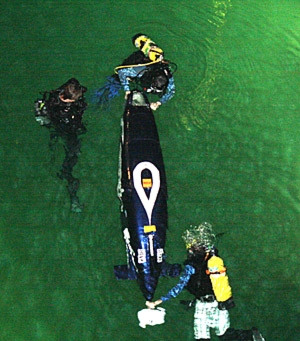 Plans are already underway for the 20011 International Submarine Race, to be held next summer at the Naval Surface Warfare Center’s Carderock test tank facility in Bethesda, Maryland. The race tests the creative skills of young engineering students from schools and colleges throughout the world, as teams compete in one- and two-person “wet” submarines submerged along a 100-meter measured course.
Plans are already underway for the 20011 International Submarine Race, to be held next summer at the Naval Surface Warfare Center’s Carderock test tank facility in Bethesda, Maryland. The race tests the creative skills of young engineering students from schools and colleges throughout the world, as teams compete in one- and two-person “wet” submarines submerged along a 100-meter measured course.
Read More
Filed under: Grades 9-12, K-12 Outreach Programs, Web Resources | Comments Off on Competition: Human-powered Submarine Race
Tags: Competitions for Students, Grades 9-12, Marine engineering, Ocean science, U.S. Navy
Posted on July 19th, 2010 by ASEE
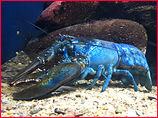 For over 13 years, the Blue Lobster Bowl has been testing Massachusetts high school students in marine sciences, including biology, chemistry, physics, geology, maritime history, and ocean engineering. Each year approximately 2,000 students from 300 schools across the nation compete in their regional tournament. Winners of regional competitions are invited to compete in the National Ocean Sciences Bowl.
For over 13 years, the Blue Lobster Bowl has been testing Massachusetts high school students in marine sciences, including biology, chemistry, physics, geology, maritime history, and ocean engineering. Each year approximately 2,000 students from 300 schools across the nation compete in their regional tournament. Winners of regional competitions are invited to compete in the National Ocean Sciences Bowl.
Read More
Filed under: Grades 9-12, K-12 Outreach Programs | Comments Off on Competition: MIT’s Ocean Science Bowl
Tags: Ocean science, Science Contest
Posted on July 19th, 2010 by ASEE
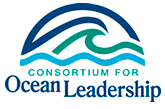 The Consortium for Ocean Leadership is a Washington, DC-based nonprofit organization that represents 95 of the leading public and private ocean research education institutions, aquaria, and industry with the mission to advance research, education and sound ocean policy. The organization manages ocean research and education programs in areas of scientific ocean drilling, ocean observing, ocean exploration, and ocean partnerships.
The Consortium for Ocean Leadership is a Washington, DC-based nonprofit organization that represents 95 of the leading public and private ocean research education institutions, aquaria, and industry with the mission to advance research, education and sound ocean policy. The organization manages ocean research and education programs in areas of scientific ocean drilling, ocean observing, ocean exploration, and ocean partnerships.
Read More
Filed under: K-12 Outreach Programs | Comments Off on Website: Consortium for Ocean Leadership
Tags: Ocean science, Web Resources
Posted on July 4th, 2010 by ASEE
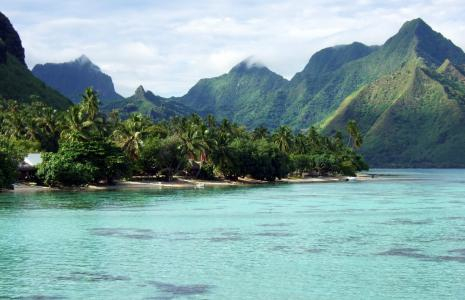 The Smithsonian Institution’s handsome new Ocean Portal includes information on ocean life and ecosystems, an ocean time line that dates back 3.5 billion years, photo essays, a section on ocean science, news about latest ocean developments, a blog, and videos. The Educators’ Corner offers free lesson plans and resources. This excellent site for teachers and students alike encourages greater public understanding and stewardship.
The Smithsonian Institution’s handsome new Ocean Portal includes information on ocean life and ecosystems, an ocean time line that dates back 3.5 billion years, photo essays, a section on ocean science, news about latest ocean developments, a blog, and videos. The Educators’ Corner offers free lesson plans and resources. This excellent site for teachers and students alike encourages greater public understanding and stewardship.
Read More
Filed under: Web Resources | Comments Off on Website: Smithsonian’s Ocean Portal
Tags: Ocean, Ocean science
Posted on June 21st, 2010 by Jaimie Schock
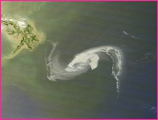 British Petroleum is using a series of dispersants to combat the massive oil spill in the Gulf of Mexico — chemicals intended to break up the surface tension of an oil slick and make oil more water-soluble. But the contents of some of these chemicals may be toxic to humans and wildlife, according to information newly released by the Environmental Protection Agency.
British Petroleum is using a series of dispersants to combat the massive oil spill in the Gulf of Mexico — chemicals intended to break up the surface tension of an oil slick and make oil more water-soluble. But the contents of some of these chemicals may be toxic to humans and wildlife, according to information newly released by the Environmental Protection Agency.
Read More
Filed under: K-12 Education News, Web Resources | Comments Off on Dispersants – a Help or a Hazard?
Tags: Chemical, Environmental Protection Agency, Environmental science, Ocean, Ocean science
 Scuba diving is an excellent hobby for underwater naturalists. In this lesson, students in grades 6-8 learn about the concepts of buoyancy and how organisms float, sink, or hover in water as they construct a neutrally buoyant “scuba diver.”
Scuba diving is an excellent hobby for underwater naturalists. In this lesson, students in grades 6-8 learn about the concepts of buoyancy and how organisms float, sink, or hover in water as they construct a neutrally buoyant “scuba diver.”








 Water is surprisingly heavy, and, when in motion, it can kill. The tsunami that hit Northern Japan on Friday is an eye-opening example of the power water can have—and the devastation it can bring. “It’s basically like a hundred tanks coming across you,” oceanography professor Philip Froelich says.
Water is surprisingly heavy, and, when in motion, it can kill. The tsunami that hit Northern Japan on Friday is an eye-opening example of the power water can have—and the devastation it can bring. “It’s basically like a hundred tanks coming across you,” oceanography professor Philip Froelich says. Teachers of grades 6 through 8 from Northrup Grumman communities have a chance to join an expedition either to the Bahamas, to examine coastal ecology, or to the edge of the Arctic, to study climate change.
Teachers of grades 6 through 8 from Northrup Grumman communities have a chance to join an expedition either to the Bahamas, to examine coastal ecology, or to the edge of the Arctic, to study climate change. Students in grades 5-8 learn the basic principle of buoyancy and how submarines use it to dive and ascend in water through creating their own submarine out of a soda bottle, pennies, and other household items. Activity courtesy of the National Museum of the U.S. Navy.
Students in grades 5-8 learn the basic principle of buoyancy and how submarines use it to dive and ascend in water through creating their own submarine out of a soda bottle, pennies, and other household items. Activity courtesy of the National Museum of the U.S. Navy. Plans are already underway for the 20011 International Submarine Race, to be held next summer at the Naval Surface Warfare Center’s Carderock test tank facility in Bethesda, Maryland. The race tests the creative skills of young engineering students from schools and colleges throughout the world, as teams compete in one- and two-person “wet” submarines submerged along a 100-meter measured course.
Plans are already underway for the 20011 International Submarine Race, to be held next summer at the Naval Surface Warfare Center’s Carderock test tank facility in Bethesda, Maryland. The race tests the creative skills of young engineering students from schools and colleges throughout the world, as teams compete in one- and two-person “wet” submarines submerged along a 100-meter measured course. For over 13 years, the
For over 13 years, the  The Consortium for Ocean Leadership is a Washington, DC-based nonprofit organization that represents 95 of the leading public and private ocean research education institutions, aquaria, and industry with the mission to advance research, education and sound ocean policy. The organization manages ocean research and education programs in areas of scientific ocean drilling, ocean observing, ocean exploration, and ocean partnerships.
The Consortium for Ocean Leadership is a Washington, DC-based nonprofit organization that represents 95 of the leading public and private ocean research education institutions, aquaria, and industry with the mission to advance research, education and sound ocean policy. The organization manages ocean research and education programs in areas of scientific ocean drilling, ocean observing, ocean exploration, and ocean partnerships. The Smithsonian Institution’s handsome new Ocean Portal includes information on ocean life and ecosystems, an ocean time line that dates back 3.5 billion years, photo essays, a section on ocean science, news about latest ocean developments, a blog, and videos. The Educators’ Corner offers free lesson plans and resources. This excellent site for teachers and students alike encourages greater public understanding and stewardship.
The Smithsonian Institution’s handsome new Ocean Portal includes information on ocean life and ecosystems, an ocean time line that dates back 3.5 billion years, photo essays, a section on ocean science, news about latest ocean developments, a blog, and videos. The Educators’ Corner offers free lesson plans and resources. This excellent site for teachers and students alike encourages greater public understanding and stewardship. British Petroleum is using a series of dispersants to combat the massive oil spill in the Gulf of Mexico — chemicals intended to break up the surface tension of an oil slick and make oil more water-soluble. But the contents of some of these chemicals may be toxic to humans and wildlife, according to information newly released by the Environmental Protection Agency.
British Petroleum is using a series of dispersants to combat the massive oil spill in the Gulf of Mexico — chemicals intended to break up the surface tension of an oil slick and make oil more water-soluble. But the contents of some of these chemicals may be toxic to humans and wildlife, according to information newly released by the Environmental Protection Agency.